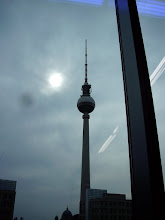The airports of the North of France will remain closed and more half of the European flights are cancelled. The cause: a big cloud stemming from the eruption of the volcano situated under the glacier Eyjafjallajökull, in the southwest of the island. These disturbances " could last another 24 hours ", confirmed on Friday morning Eurocontrol the European company responsible of the flight safety. " It will depend on the way that evolves the cloud ". Nobody was really interested in the eruption started on Wednesday and which caused the evacuation of 800 persons in a region from the east of Reykjavik. It is nevertheless impressive, when you look at the images shot in Iceland.
• In one day, the winds transported ashes at 11 km of the ground, where fly the long distance flights. The authorities of the aviation do not want to be at risk that planes cross its road. For two reasons:
• The clouds of volcanic ashes include some sulfur, which risks to make the windows of the cockpit opaque. But aircrafts fly by instruments and this point would be surmountable.
• Especially reactors run are at risks: the silica contained in ashes can provoke the stop of the engine.
It happened before. An episode stays in the memory of the air authorities: on December 15th, 1989, a Boeing 747 of the company KLM crosses the panache of volcanic ashes of the mount Redoubt during the approach of Anchorage, in Alaska. Having ingested quantities of ashes, reactors stop working, the plane made a fall of 4 000 meters and eventually landed. But the four reactors had be changed. The Civil Aviation recommends to the travelers to contact their airline company. We cannot plan how is going to evolve the situation at the moment. We wait for samples to analyze the magma, but It comes back to normal step by step.
• In one day, the winds transported ashes at 11 km of the ground, where fly the long distance flights. The authorities of the aviation do not want to be at risk that planes cross its road. For two reasons:
• The clouds of volcanic ashes include some sulfur, which risks to make the windows of the cockpit opaque. But aircrafts fly by instruments and this point would be surmountable.
• Especially reactors run are at risks: the silica contained in ashes can provoke the stop of the engine.
It happened before. An episode stays in the memory of the air authorities: on December 15th, 1989, a Boeing 747 of the company KLM crosses the panache of volcanic ashes of the mount Redoubt during the approach of Anchorage, in Alaska. Having ingested quantities of ashes, reactors stop working, the plane made a fall of 4 000 meters and eventually landed. But the four reactors had be changed. The Civil Aviation recommends to the travelers to contact their airline company. We cannot plan how is going to evolve the situation at the moment. We wait for samples to analyze the magma, but It comes back to normal step by step.


No comments:
Post a Comment